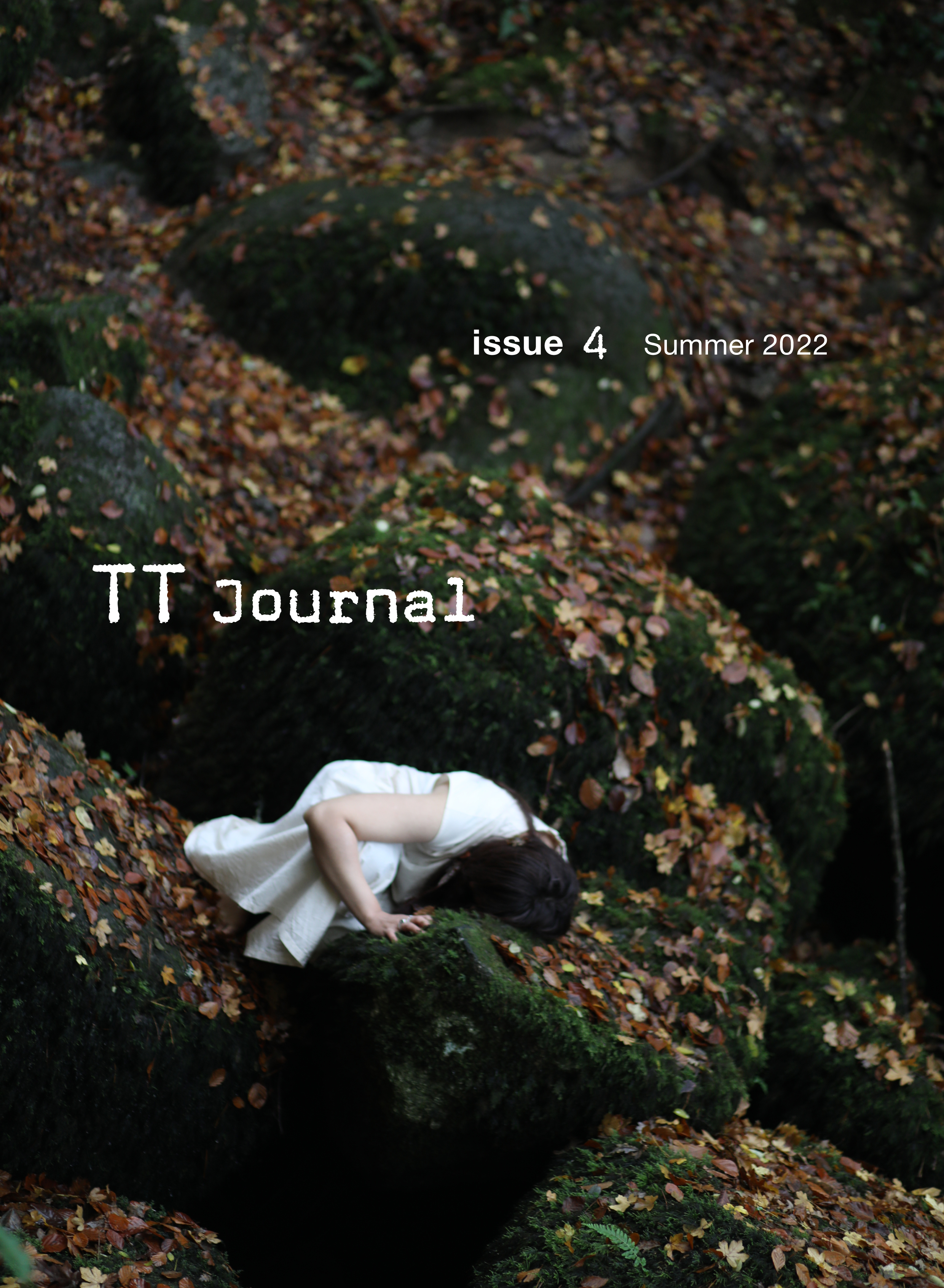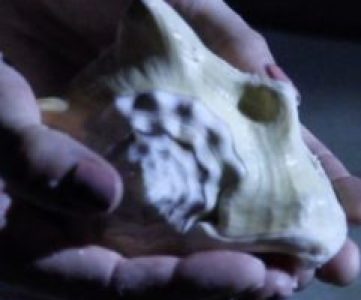TT Journal, ISSUE 4, 12th September 2022
Dear reader
It has taken quite a while but finally the 4th issue of TT journal is here.
At a time of various upheavals, sense of uncertainty, of growing concerns over the wellbeing of our planet I hope that these contributions from artists, filmmakers, scientists, philosophers, scholars and poets will offer a much-needed space for calm reflection and perhaps also an impulse for what one of the contributors describes as quiet activism.
The focus of this issue is very tightly related to the core concept of Tangible Territory journal. That is the relationship between us, human beings and the different environments we occupy, be they wild or domesticated, which shape us as much as we shape them. As geologist Václav Cílek explains in his contribution, if we are attentive, patient and sensitive to this implicit exchange of energies, atmospheres, moods and emotions, we can be rewarded by gaining a deep insight into their genius loci. Places can be shy, reticent, secretive: Each one has different requirements but they all have a story to share if we pay the right attention. This a realisation animator and scholar Pamela Taylor Turner experienced upon her encounter with Chapel Island. And it was the focus brought on by the animation process that became her form of attentive dialogue with the location she now holds dear.
Václav Cílek also explains to us that places exist at different time scales to ours. Some of these other time scales, such as plant lifecycle, can be made accessible to us humans by the use of time lapse technologies. This way, at once fascinating and seductive worlds begin to open up in front of our eyes. But as filmmaker Cathy Greenhalgh elaborates, does this magical access, such as the one offered by the BBC’s The Green Planet, actually really signify an increased level of understanding? Or are we just voyeurs in an alien world whose motivations remain distant?
Artist Adam Vačkář, in his personal essay charting some of his growing fascination with the world of biology, highlights the fact that motivations of plants don’t necessarily correspond to our desire for aesthetic beauty. Far from it. In biological terms, the concept of beauty doesn’t exist. So how useful is our anthropomorphic tendency, our desire to instil the non-human world with human dreams? As Cathy Greenhalgh elaborates in her text, doesn’t any tool that opens a channel of empathy with the non-human worlds have a potentially positive and transformative impact on how much we care for our environment?
And what about technology itself, the varied tools that enable us to make these wild leaps across different temporal and physical scales, to connect with what hitherto remained a mystery? As professor Célia Quico demonstrates to us, technology can certainly be a tool of magic. Her project Nazaré Imersiva, which manages to teleport us across time into the past and future to experience it in its three-dimensional presence, is a form of re-enchantment. Combined with the understanding based on research of experimental psychologist professor Charles Spence, who explains to us some of the reasons and beneficial effects of spending time close to water’s surface, the potential for the therapeutic use of VR (or other) technology becomes clear. It is certainly exciting to consider this potential of technology to mediate experiences otherwise inaccessible to certain groups of people.
Yet technology is only as good as the motivation and imagination that has led to its development and use. And from time to time it may be useful and insightful to return to the basics. This is why I became so deeply struck by the recent decision of Lev Manovich to return to drawing. One of the leading theorists of digital culture as well as an artist who currently explores AI platforms such as Midjourney to generate artwork, feels compelled to return to a hand-drawn line, marks made on paper with a simple pen.
As Philosopher Carsten Friberg reminds us in his article it is still the world that is a precondition to any of our fancy tools being fascinating. Even in the world of AI systems the reference point remains our embodied reality and imagination. So why has the body been to a great extent left out of our technologically mediated world, as so many of us realised (more or less) painfully during the pandemic? Ophelia, the fictional woman who has become trapped inside a computer screen, exiled from the world of the senses, is a witness to the predicament of technologically induced loss of a physical body. This time Ophelia reappears in Amy Neilson Smith’s two poems, haunted by her missing body, which Amy Neilson Smith tries to return to her.
As Ophelia’s story demonstrates, when the environment we occupy becomes virtual, our connection to our own body can become strained. So we come back in a full circle – to the core of the matter: The reciprocal relationship between ourselves and the environment we occupy. This relationship is always mediated: Through our senses, or through various technologies and media which can help to expand the capacity of our body in a particular direction. This process of mediation seems key as it defines the rules, methods of engagement, of dialogue, and our subsequent understanding. Too much abstraction and we start to feel disconnected, as if we lost our body, and with it our anchoring in the world. At this moment the practice of remembering the body becomes key. This body can be ‘brought back’ (or our mind brought back into it), through our focused attention. It can be trained, sensitised, taught ways to pay attention with all its own tools/senses. This is something I myself explore during my sensory workshops, such as the one discussed in this issue, created for an art/science workshop (focused on how we experience places).
With our attention refocused, the body can become a tool of empathy, of tuning in, of reconnecting with our environment: Artistic collective Hiraezh shares with us simple yet powerful ways of embodying a place, of becoming a forest. Artist Karel Komorous endures harsh weather so that he can resonate with a place in order to reconnect with his own body and self during the pandemic isolation. The tools are minimal here. A feeling human body immersed in a landscape, a sophisticated instrument of sensing. In both these examples the final photograph, a single moment captured, is secondary to the much longer process of becoming tuned.
Filmmaker Matt Hulse too uses his own body to connect with the world he captures on film and video. In his work he embraces the flawed, the messy, the accidental as a vital part of his creative process (and being human). As he admits, looking through the lens of the camera is an important way of participating, of “looking from a distance” but always with the visceral desire to connect to the subject of looking, to learn by empathy. Matt Hulse, just like some of the filmmakers discussed by Sarah Tremlett in her interview about her new book The Poetics of Poetry Film, has embraced the clash between old and new technologies, subverting them to expand their own poetic vocabulary. Yet this doesn’t mean that words, in their pure form, are obsolete. Far from it. As Gabriel Josipovici’s short story reminds us, there are myriad ways of manifesting the wonderful human capacity to connect, through empathy, with the experience of others, across time and space. Josipovici’s story, so sparse yet so potent, is a good reminder of the power of written word.
But to conclude and summarise: It appears that the word empathy has been a re-occurring motif of this 4th issue of the TT journal. So could empathy be a good starting point for our quiet activism? For making the first step of tuning ourselves to our environment, of understanding ourselves within it? We could start simply by cultivating our (multi-sensory) attention, quietly, through the simple exercise of taking a walk. Perhaps observing the way a steep hill raises our heart beat, and the lake calms it again, while our feet leave gentle marks in the soil, as we weave our way forward, towards a hopeful place.
Tereza Stehlíková
12th September 2022, Prague

Cover image: Sobia Zaidi, Huelgoat Forest, France 2021, photograph by Grace Gelder (Hiraezh Collective)
Cover design: Jon Wozencroft
